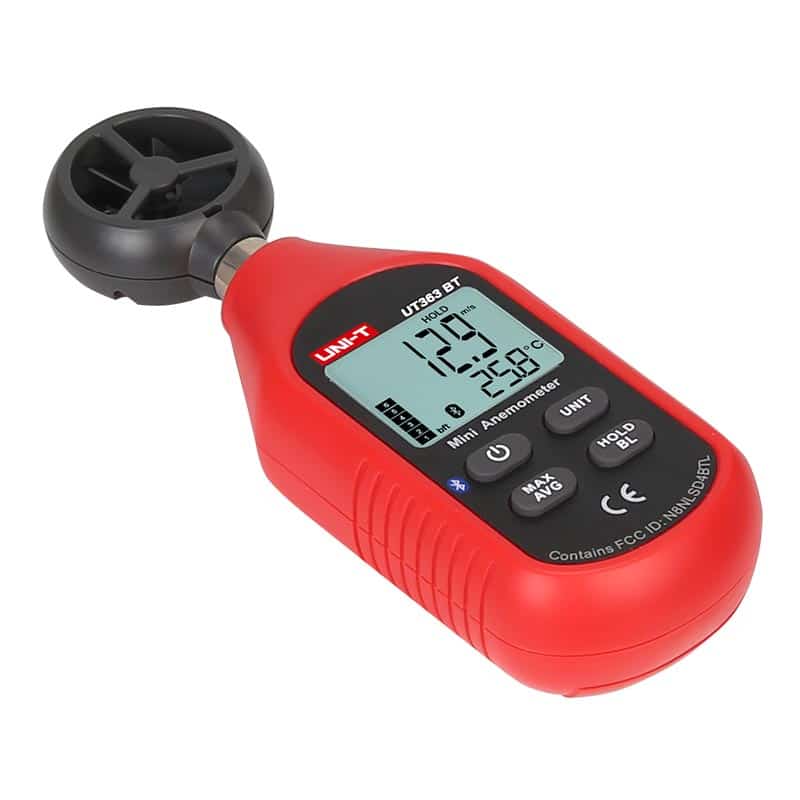How to Keep and Look After Your Anemometer to Make Certain Long Life
How to Keep and Look After Your Anemometer to Make Certain Long Life
Blog Article
Anemometers Introduced: Recognizing Their Relevance in Ecological Tracking and Safety And Security Actions
The duty of anemometers in environmental monitoring and safety and security steps is frequently underestimated, yet their relevance is undeniable. From weather forecasting to air travel safety and security, anemometers play a vital role in giving precise information that notifies decision-making procedures and improves total safety.
Background of Anemometers
The development of anemometers can be mapped back to the ancient worlds where rudimentary wind determining tools were initial utilized. One of the earliest recognized anemometers was the hemispherical mug anemometer invented by Leon Battista Alberti in the 15th century.
Over the years, innovations in modern technology led to the growth of even more contemporary anemometers, including ultrasonic anemometers and laser Doppler anemometers, providing enhanced precision and efficiency in gauging wind rate and instructions. The history of anemometers showcases a remarkable journey of technology and progression in the area of meteorology.
Kinds Of Anemometers
Throughout the field of weather forecasting, different types of anemometers have actually been established to properly measure wind rate and direction. Sonic anemometers utilize ultrasonic signals to measure wind speed and instructions accurately. Hot-wire anemometers run based on the concept that the cooling impact of wind on a warmed wire is proportional to the wind rate.
Applications in Weather Forecasting
Having talked about the different kinds of anemometers made use of in meteorology for gauging wind rate and instructions, it is necessary to discover their sensible applications in the area. Anemometers play an important function in weather forecasting by giving real-time and exact information on wind problems (anemometer). Meteorologists use anemometers to monitor wind speed and direction to forecast weather patterns, issue warnings for extreme weather occasions like storms, hurricanes, and tornadoes, and assess atmospheric conditions for aviation safety
In meteorology, anemometers help in comprehending neighborhood and local wind patterns, which are vital for forecasting climate modifications and figuring out climatic fads. These gadgets are likewise used in study to examine microclimates, urban heat islands, and air pollution dispersion. Furthermore, anemometers are employed in farming to enhance plant administration techniques, such as watering and pesticide application, based upon wind conditions.
Importance in Aeronautics Security
An integral facet of making sure aviation safety and security hinges on the meticulous surveillance of wind conditions utilizing anemometers. Anemometers play an important role in air travel by giving real-time data on wind rate and direction, assisting pilots in making notified choices during landing, trip, and take-off. Solid and uncertain winds can substantially impact aircraft procedures, making it important for aeronautics authorities to count on exact wind measurements to make certain the security of passengers and crew.

In the vibrant environment of air travel, where also minor adjustments in wind speed and direction can have extensive effects, anemometers stand as crucial tools for advertising secure and risk-free air traveling.
Role in Environmental Research
How do anemometers add to improvements in environmental research study? Anemometers play a crucial function in ecological research by offering crucial data on wind speed and direction. This details is vital for comprehending different climatic procedures, such as air pollution dispersion, weather condition patterns, and environment adjustment. By properly measuring wind qualities, anemometers assist scientists analyze the movement of pollutants in the air, evaluate the effect of commercial exhausts, and forecast the spread of impurities in the environment.


Conclusion
In conclusion, anemometers have played an essential role in environmental surveillance and precaution. With a rich history and numerous types offered, these devices have actually been commonly made use of in weather forecasting, aeronautics safety and security, and ecological research study. useful reference Understanding the importance of anemometers is vital for precisely measuring wind speed and direction, which is vital for forecasting climate patterns, making sure risk-free aviation procedures, and carrying out environmental studies - anemometer. Their payments to these fields can not be underestimated.
One of the earliest well-known anemometers was the hemispherical mug anemometer created by Leon Battista Alberti in the 15th century. Over the years, advancements in modern technology led to the development of even more modern anemometers, consisting of ultrasonic anemometers and laser Doppler anemometers, supplying boosted accuracy and effectiveness in gauging wind speed get more and direction. Hot-wire anemometers run based on the principle that the cooling impact of wind on a warmed wire is symmetrical to the wind rate. Meteorologists use anemometers to keep an eye on wind rate and direction to forecast climate patterns, issue warnings for extreme weather events like hurricanes, storms, and typhoons, and analyze climatic problems for aviation safety and security.
Understanding the importance of anemometers is essential for accurately determining wind speed and direction, which is important for anticipating weather condition patterns, making certain safe aviation operations, and conducting environmental studies. (anemometer)
Report this page